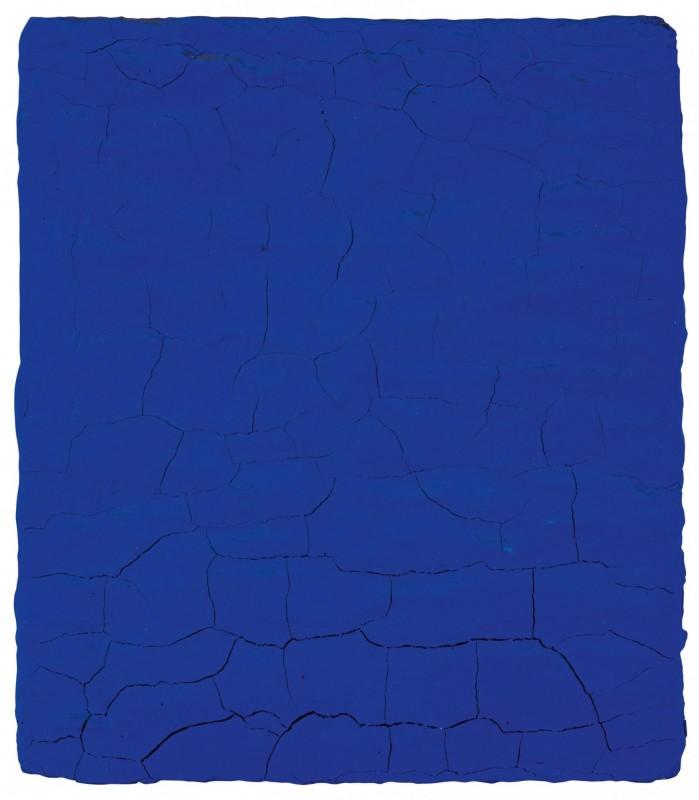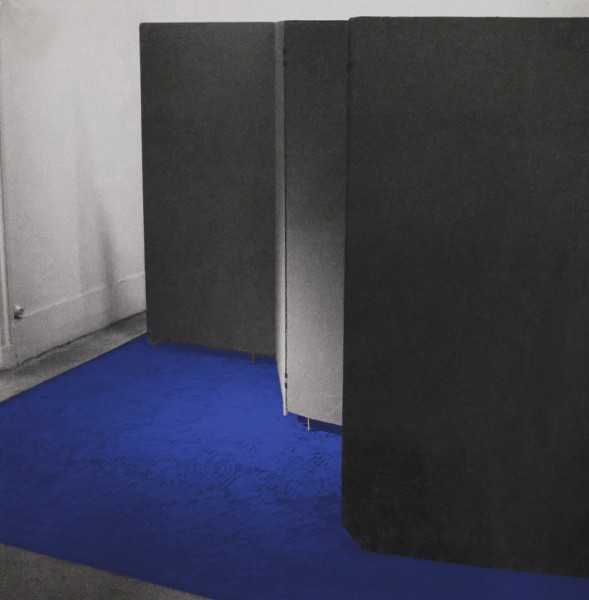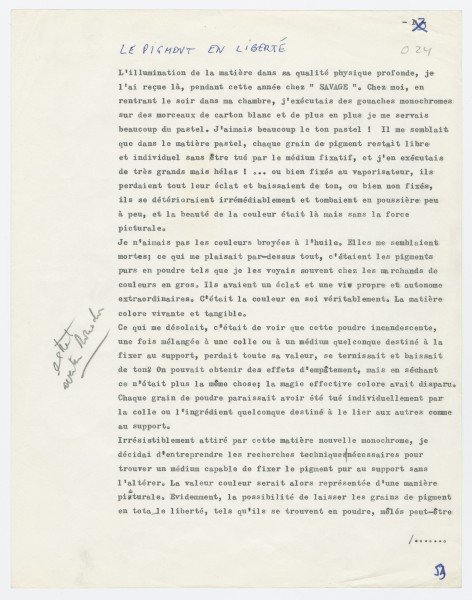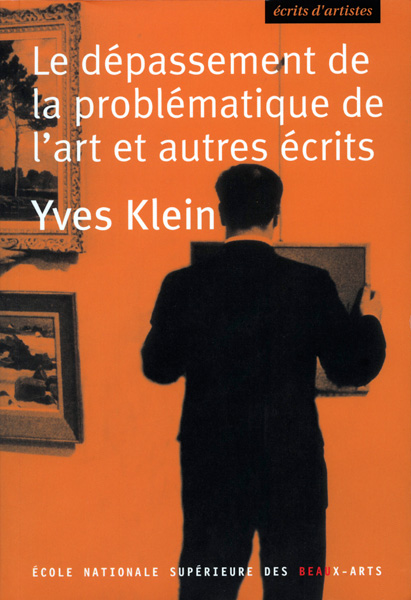"How do I get there, while still drawing from the pictorial norms that I have constructed? For painting, I have long searched for a fixative medium to expressly fix each grain of pigment that make up the radiant and dazzling mass found in the bins of the merchants of color. It is quite dismaying to see this same pigment, when milled in oil, for example, lose all its brilliance, all its essential vitality. It seems as if mummified; nevertheless, one cannot leave it on the ground, held by the fixative medium that the invisible force of terrestrial attraction, for man naturally stands upright and his gaze naturally fixes on the horizon. The painting should be presented at his eye level in a position perpendicular to the earth, like a screen. It thus becomes necessary to make the pigment adhere to the supporting surface in some manner. I have searched for a fixative medium that is capable of fixing each grain of pigment to the other and then to the supporting surface without the alteration of any of them and without depriving any of them of their autonomous potential of radiation, while forming a unit with the others and the support, thus creating the mass of color, the pictorial surface."
Yves Klein, excerpt from "The Evolution of Art Towards the Immaterial", Lecture at the Sorbonne, 3 June 1959
"It was during this year at the SAVAGE studio that I perceived the illumination of matter as a profoundly physical quality. When I returned home to my room in the evenings I did monochrome gouaches on pieces of white cardboard and also increasingly used a lot of pastels. I was very fond of pastel tones! It seemed to me that, in pastel, each grain of pigment remained free and individual without being killed by the fixative medium, and I made some very large works, but, alas, when sprayed with a fixative, they lost all their brilliance and its tone darkened, and without fixative they unfailingly deteriorated and, little by little, turned to dust; the beauty of the color remained, but without pictorial strength.
I had no affection for oil paint. The colors seemed dead to me. What pleased me above all were pure pigments in powder form, such as I often saw at the wholesale paint suppliers. They had a brilliance and an extraordinary, autonomous life of their own. This was truly color in itself. The living and tangible matter of color.
What saddened me was to see that this incandescent powder, once mixed with glue or whatever medium intended as a fixative, lost all its value, became tarnished, its tone darkened. One might obtain the effects of impasto, but after it dried, it was no longer the same; the effective magic of color had vanished. Each grain of powder appeared to have been individually killed by the glue or whatever fixative used to binding them together, as well as to the support.
Irresistibly attracted by this new monochrome manner, I decided to undertake the technical research required to find a medium capable of affixing pure pigment without altering it. The color value would then be represented in a pictorial man- ner. The possibility of leaving the grains of pigment entirely free, such as they are in powder form, mixed perhaps yet still independent in their semblance, seemed sufficiently auspicious to me. Art is total freedom; it is life; when there is imprisonment in whatever manner, liberty is restrained and life is diminished in rela- tion to the degree of imprisonment.
To leave the powdered pigment as free as I had it seen at the paint suppliers, while presenting them as a painting, it would simply be necessary to spread it on the ground. The invisible force of gravity would keep it down to the surface of the ground without altering it. At the time I did not consider this to be a possible solution, especially one that would be acceptable to the plastic arts community, even the most informal among them. Also, I had already begun working in the classical pictorial format, which is to say that I had begun to compose monochrome paintings!"
Yves Klein, excerpt from "the Monochrome Adventure: the monochrome epic", 1960



